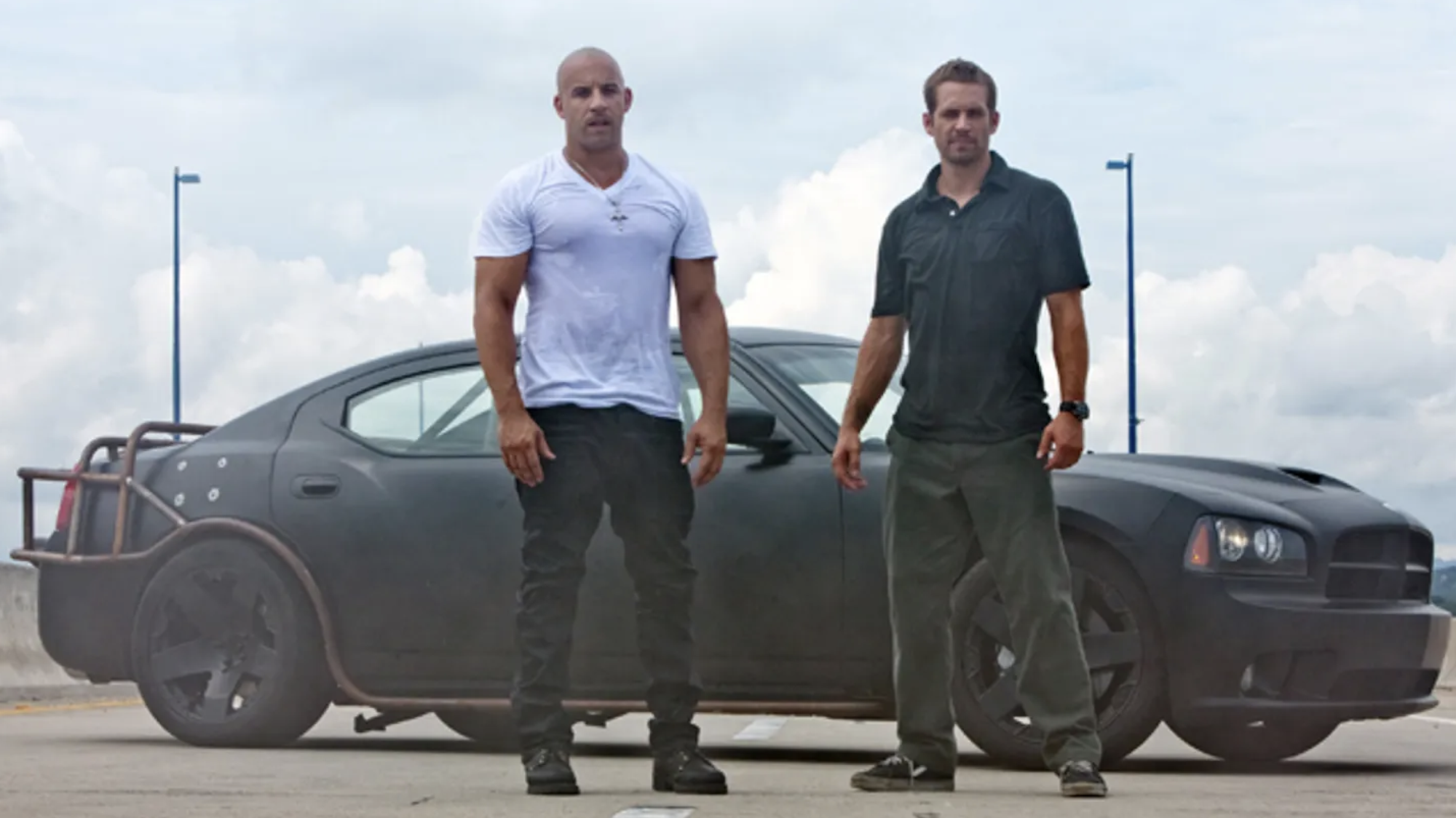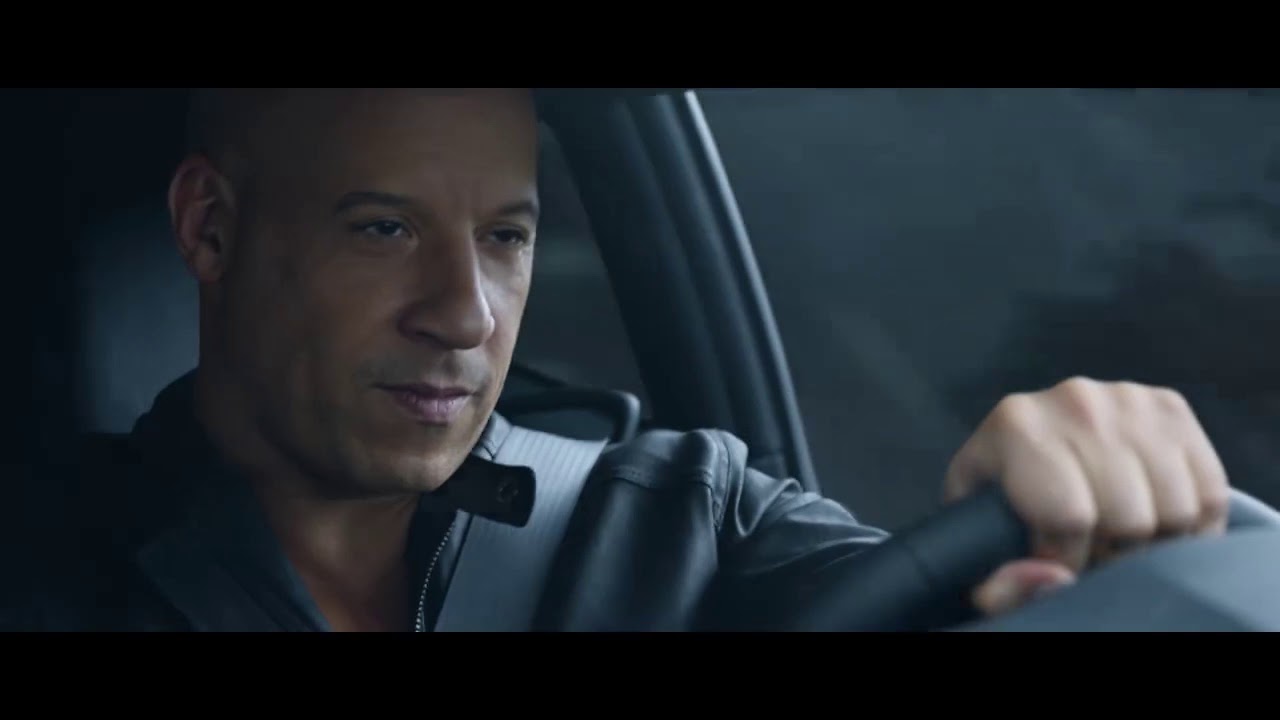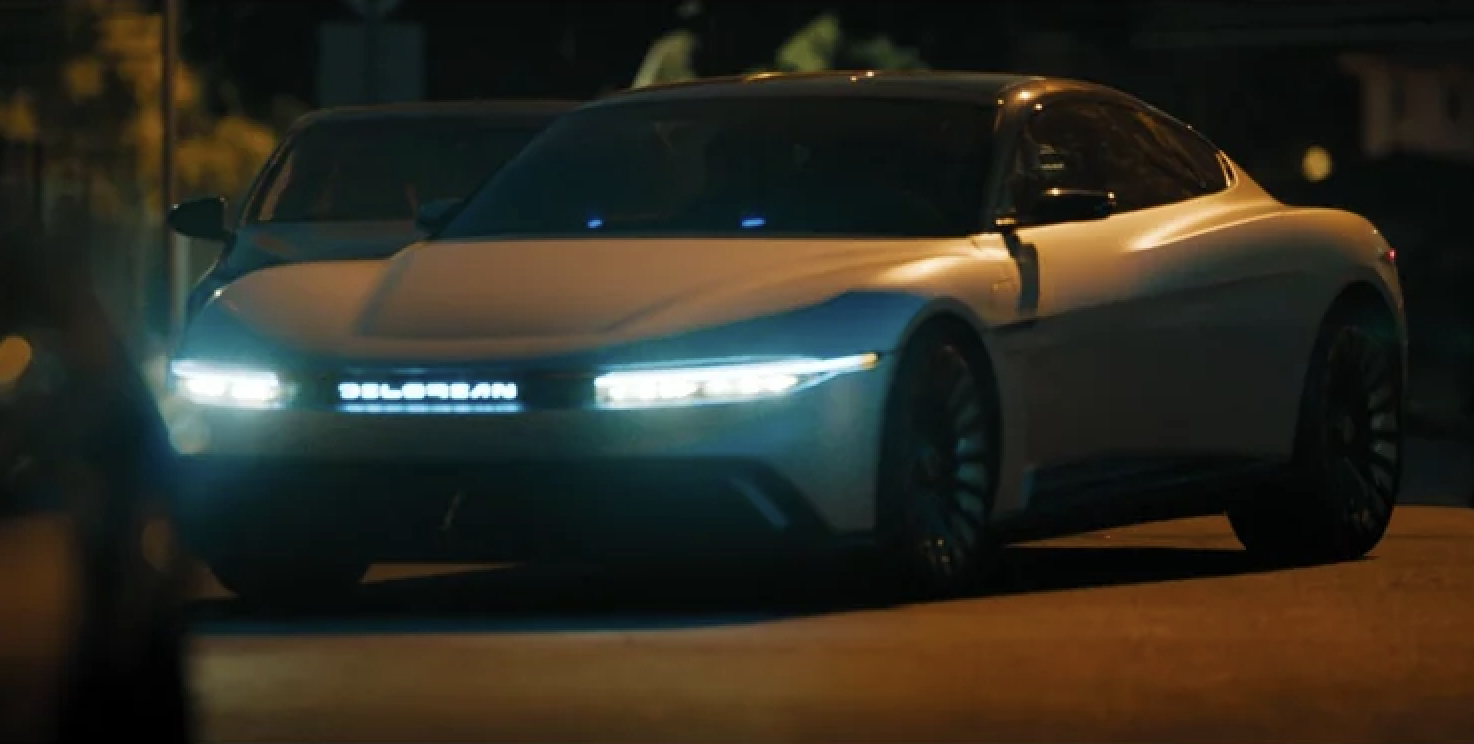When Olivier François joined Chrysler in 2009, the automotive industry was “pretty broke.” It was the tail end of the Great Recession, and the Paris-born marketing virtuoso, who had been leading Fiat Group’s Lancia brand—timeless Italian elegance—was dispatched to the rusted husk of Detroit just as the auto sector was teetering on collapse. Even after receiving billions of dollars in bailout cash from Washington and being swallowed up by Fiat, Chrysler and its various brands, including Dodge, desperately needed an existential revitalization. As the company’s new chief executive officer, François didn’t just need to sell cars; he needed to “reignite the American dream.”
And what better place to start than Hollywood, the nation’s dream factory? La La Land and Motor City have a long history of using each other to boost their respective industries, going back to the 1950s, when Ford and General Motors paid movie studios to feature their fleets on the big screen. What was Bullitt without the Ford Mustang? Who was Smokey without his Pontiac Trans Am?
[Ed note: This article is excerpted from WELCOME TO THE FAMILY: The Explosive Story Behind Fast & Furious, the Blockbusters that Supercharged the World. Copyright 2025 by Barry Hertz. Reprinted with permission of Grand Central Publishing. All rights reserved.]
François swiftly set up a series of meetings with studio heads, including Universal’s Ron Meyer. The two leaders shared a problem: They both had products that needed extensive marketing campaigns, but each of their respective sectors was in an era of severe belt-tightening. Maybe, though, there was a way in which they could help each other out—starting with Fast.

“There was an extreme level of frugality on both sides, but I was interested because Fast is a global phenomenon that, like Dodge, is also very American,” says François, who joined Fiat in 2005 with no previous automotive marketing experience. “Coming from a European culture, you discover Dodge with fresh eyes—and you discover muscle cars, a culture that doesn’t really exist anywhere else.”
Dominic Toretto’s love of the Dodge Charger spoke especially to François’s marketing plight. “Dodge is all about high-octane performance. There is a rebelliousness to the brand, which fits perfectly with the peculiar persona of Dom,” François says. “It’s an incredible alignment between the ethos of one and the other.”
François and Meyer came to an unusual arrangement: Instead of paying for the placement of its cars in a film, Dodge would provide vehicles—mostly preproduction cars, which are usually scrapped after testing—to producers free of charge. The automaker would then take footage from the finished film to use in its own car ads. “We leveraged the filmmaking. We didn’t need the car in the whole movie, but we needed at least one iconic moment to go into our commercial,” says François. “And that became our new business model when it comes to product placement, even today.”

The partnership began with Fast Five, with Dodge supplying dozens of never-before-seen 2011 Chargers to the filmmakers. In turn, Dodge received the desired high-octane footage from the movie to use in its ads—including a spot with the tagline “Car Chases Make Movies Better.” To further goose the cross-brand promotion, Dodge launched a special Fast-themed website offering a sweepstakes to win a Charger and also sponsored the film’s world premiere in Rio. On the red carpet, the most photographed star wasn’t Vin Diesel or Dwayne Johnson but a pair of Chargers.
Prior to the Dodge deal, product placement was a tricky subject for Fast’s filmmakers. The character of a car was as important as, if not sometimes more than, that of the driver—and directors such as Justin Lin tried to push back whenever they were instructed by the studio to use this or that vehicle, even if it was ultimately an issue far above their pay grade. “I usually veto pretty much every product placement that they bring up. And it becomes very difficult—you have car companies offering you sweet deals,” Lin said after making Fast 4. “To the studio’s credit, they really respected the process. I’m glad that Dom and Brian aren’t driving like brand-new GM cars or Toyotas. That would’ve been hurtful to the film.”
Not all product placement is so easy to detect. Most audiences might assume that, say, Mitsubishi had paid gobs of money to have Brian O’Conner sit behind the wheel of a 1995 Eclipse GT in The Fast and the Furious and then the Lancer Evolution VII in 2 Fast 2 Furious. Not quite. “We were as taken by surprise by the first movie as anyone else,” says Ian Beavis, the head of marketing at Mitsubishi North America in the early aughts, noting that the company had found out that its cars were being used on-screen only after the film was released. “We never provided vehicles or product placement for the movies. They were just very true to what was going on in street-race culture at the time. We were happy for the publicity.”

Absent formal arrangements, film producers typically operate in a gray area when using cars on-screen. The general rule for movies is that if you see a logo, the filmmaker has at least asked the manufacturer for permission to use it, even if they purchased or rented the vehicles on their own dime. But every automotive brand approaches the situation differently—especially if the cars are going to be destroyed during a high-speed chase or used for, say, scenes involving illegal street racing. “There’s a delicate sort of balance,” says Beavis, who is now the chief strategy officer at the global automotive marketing agency AMCI. “We would do nothing to dissuade them from producing the movie, but we would do everything to dissuade them from promoting unsafe activity,” such as speeding and drifting. “But, you know, we wouldn’t want to dampen the enthusiasm for the product. That’s the reason that the movies exist.”

Dodge addressed the issue of how to sell a Fast-like fantasy without explicitly endorsing unsafe driving during its clever ad campaign for Furious 7. In a TV spot called “Flash to the Future 7,” a regular-Joe customer wanders around a typical Dodge showroom, finding the same lime green 2015 Challenger that Letty drives in the film. After sliding into the driver’s seat, the ad cuts to a scene from the film as if it is the customer’s daydream—and the momentary fantasy is so powerful that the guy purchases the Challenger then and there.
But François, today known as “the Don Draper of Chrysler,” wasn’t nearly done expanding the partnership. After talking with Diesel about how he could be personally involved in the ad campaigns, François decided to revamp the traditional celebrity pitchman route for something more metacontextual: What if Dom Toretto himself were the official spokesman?

“Celebrities are celebrities—they’re not always reliable,” says François, whose new TV spots placed “Dom” behind the wheel of a Charger while the character welcomed audiences to the “Brotherhood of Muscle.” A trend was born. Soon François had Will Ferrell’s Anchorman 2 hero, Ron Burgundy, selling Durangos and Ben Stiller’s male-model doofus, Derek Zoolander, hawking the Fiat 500X.
As the relationship between Dodge and Hollywood evolved, there were complexities and challenges. “There is a level of secrecy and confidentiality on movies that is pretty incredible,” François says. “I’m less paranoid sharing the design of a future car that’s worth billions of dollars than these people are of sharing images and storyboards.”

The leveraged-to-the-max partnership hasn’t made the Fast films completely Dodge devoted. Furious 7, for instance, gives prominent placement to a 2012 Nissan GT-R, a 2006 Aston Martin DB9, a 2010 BMW M5, and a handful of vintage rides, such as a 1969 Ford Mustang. But at the same time, the films have moved beyond the import tuner culture of the first three installments into something broader, something more … American. The distinct JDM aesthetic of chrome wheels, decked-out graphics, and blinding color in the 2 Fast and Tokyo Drift films are gone. From Fast Five onward, the cars are less accessorized, more industrial, more stolidly Detroit.

But does Fast need Dodge as much as Dodge needs Fast? The currents of global car culture are always shifting; there is a reason why the first electric car to pop up in the series, Fast X ’s DeLorean Alpha5, is driven by a villain. But in Fast, the important thing is always—and will always be—the ride.
“The last thing that so many young kids want today is to put up a poster of a beautiful car above their bed—the younger generation is no longer dreaming of cars,” laments François, who is now the global chief marketing officer of Stellantis (formed after the 2021 merger of Fiat Chrysler, GM Europe, and France’s PSA Group). “Movies like Fast & Furious, which very much engage with younger audiences, are helping keep car culture alive.”
[Ed note: This article is excerpted from WELCOME TO THE FAMILY: The Explosive Story Behind Fast & Furious, the Blockbusters that Supercharged the World. Copyright 2025 by Barry Hertz. Reprinted with permission of Grand Central Publishing. All rights reserved. This post contains an Amazon affiliate link, and we might make a commission if you purchase this book.]










Deleting my comment.
Ground Zero for the beginning of the end of modern day car culture.
I guess if he sold cars he did his job. The whole revived brotherhood thing has turned off a lot of old Mopar guys to the point they won’t buy a fast one because people are always trying to race them.
That’s disappointing. 🙁
Wasn’t the Trans Am the Bandits car? Smokey drove a cop car
“A broke Chrysler”
A tad redundant, don’t you think?
I certainly think the E-Charger needed a Fast and Furious platform of some sort to help with the all electric only adoption and acceptance.
BTW, I think GM does it too, I was pretty surprised a pre-production Electric Silverado made it to be the new truck of Tom Hanks, Otto Character.
This explains the awkwardly shoe-horned Mopar product placement in Breaking Bad (timelines not lining up aside). At least they gave Skylar an Ford Edge to soften it a little…that excretable scene where Walter and Walt Jr rev the engines in the driveway was particularly egregious. Hank driving a Durango was a little more on-point…
yet you know most people have largely forgotten those vehicles, except for the almighty Aztek!
I always suspected they had an agreement with Dodge for the movies. In Fast Five they had the then brand new LD Chargers, but you could clearly see some of the Charger police cars were actually previous gen LX cars that were customized to look like an LD. Only Dodge would care about only seeing the current gen cars on screen.
“Who was Smokey without his Pontiac Trans Am?” Uh, I think that’s a better question for the Bandit.
I always thought the use of the fake TA shaker hood scoop on the cop cars in the bandit was….odd. Specifically because those cars were Plymouth’s
IIRC those were retired cop cars from a local LEA in Georgia and they were purchased with the scoops already on them. It wasn’t done for the movie.
https://copcardotcom.fotki.com/contributions_by_name/by_last_name_a_through_c/max_bellard/gadekalbco.html
“Who was Smokey without his Pontiac Trans Am?”
Proofread, you sumb*tch! Or they’ll barbecue your asses in molasses!